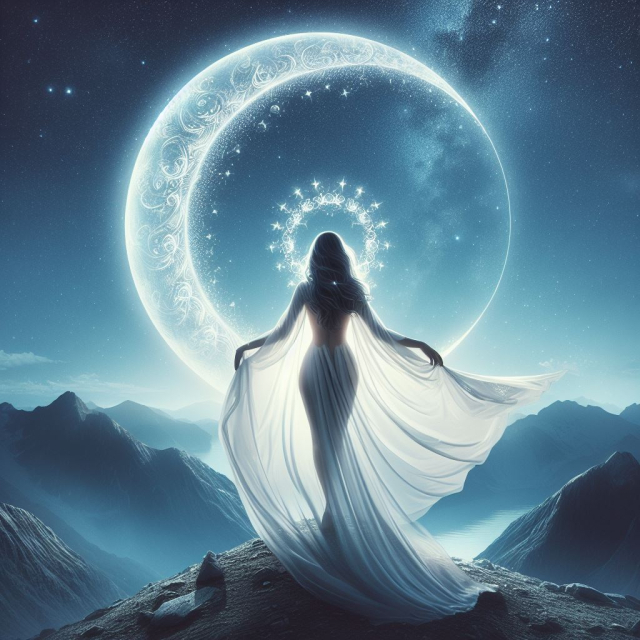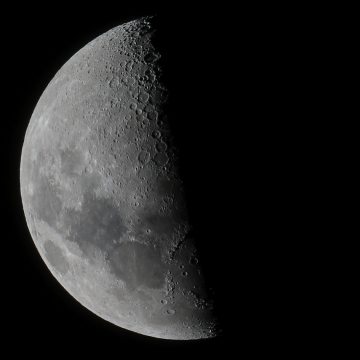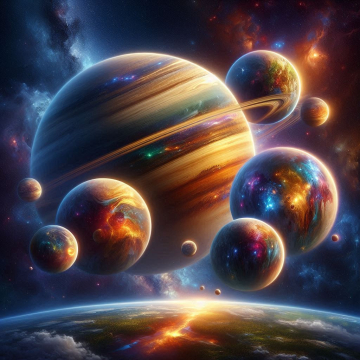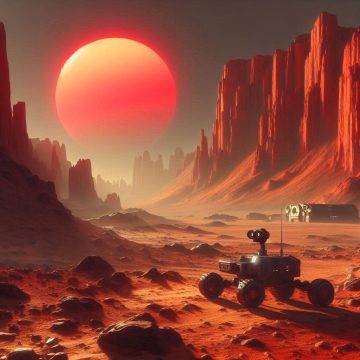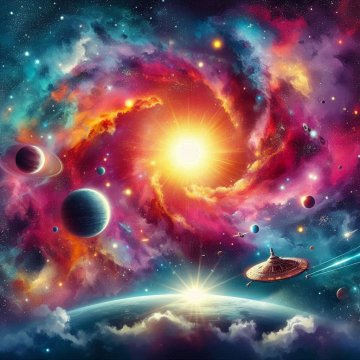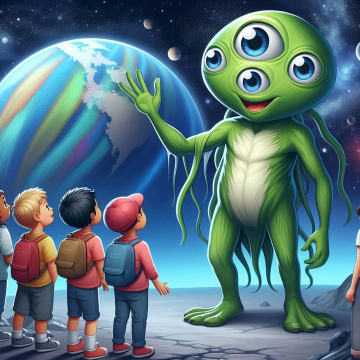Since time immemorial, the Moon has held a deep fascination for humanity. Its mysterious presence in the night sky has inspired a wide range of myths, legends, literary works, music and films throughout history. This enigmatic celestial sphere, our closest cosmic neighbor, has been an object of worship, contemplation and speculation in all cultures of the world. Join us as we explore the influence and meaning of the Moon in popular culture, from ancient times to the modern era.
Lunar mythology:
In ancient civilizations, the Moon was considered a divine deity. In Greek mythology, Selene was the lunar goddess, personifying the full moon and its silvery glow. The Romans knew her as Luna, while in Egyptian mythology, Thoth was the god of the moon and wisdom. These mythological figures reflected the cultural and religious importance attributed to the Moon as a source of light in the darkness of the night and as a symbol of cycles and transformations.
Influence on literature:
The Moon has been an inspiring muse for countless writers throughout history. In romantic poetry, the Moon symbolizes love, melancholy and ethereal beauty. Paul Verlaine's poem "Clair de Lune" captures the romantic atmosphere of a moonlit night. In science fiction literature, the Moon has been the setting for many imaginative stories, from Jules Verne's "From the Earth to the Moon" to Robert A. Heinlein's "The Moon is a Cruel Mistress," exploring themes of colonization, space adventure and alien encounters.
Art and visual culture:
In visual art, the image of the Moon has been portrayed in a variety of styles and contexts. From prehistoric cave paintings to masterpieces of Renaissance painting and contemporary artistic expressions, the Moon has been a recurring motif. Artists such as Vincent van Gogh, Caspar David Friedrich and Salvador Dalí have used the Moon as a symbol of inspiration, mystery and the subconscious in their works. In contemporary popular culture, the Moon continues to be a source of inspiration for illustrators, designers and filmmakers, who depict it in both realistic and abstract forms.
Music and lunar melody:
The influence of the Moon on music is undeniable. From classical compositions like Beethoven's "Moonlight" to popular songs like Frank Sinatra's "Fly Me to the Moon," the Moon has been a recurring theme in music of all genres. In rock, pop and folk, numerous songs refer to the Moon in their lyrics, evoking its mystery and romanticism. Bands like Pink Floyd have explored lunar themes in concept albums like "The Dark Side of the Moon," while contemporary artists like Kanye West have incorporated imagery of the Moon into their live shows and music videos.
Cinema and television:
The Moon has been an iconic setting in film and television. From classics like Georges Méliès' "A Trip to the Moon" to contemporary films like Duncan Jones' "Moon," the Moon has been the backdrop for numerous cinematic stories. In the realm of science fiction, the Moon has been depicted as a site of extraterrestrial exploration, colonization and conflict in films such as Stanley Kubrick's "2001: A Space Odyssey" and Ron Howard's "Apollo 13." In television culture, the Moon has been the focus of scientific documentaries and outreach programs, as well as science fiction and fantasy series that explore its mysteries and possibilities.
The moon in contemporary popular culture:
In contemporary popular culture, the Moon remains a powerful and evocative symbol that is intertwined with science, technology and imagination. The appearance of astronomical phenomena such as the "supermoon", when the Moon reaches its closest point to the Earth in its elliptical orbit, has generated renewed public interest and renewed fascination with our natural satellite. These events are widely covered by the media and celebrated by astronomy enthusiasts around the world.
Furthermore, the Moon continues to be the subject of conspiracy theories and speculation about its nature and origin. From the controversies surrounding the 1969 Moon landing to theories suggesting that the Moon is an artificial or hollow object, these debates fuel the popular imagination and generate heated discussions online and off.
In youth literature and fantasy culture, the Moon continues to be a recurring theme in stories of love, adventure, and magic. Books like Stephenie Meyer's "Twilight," which features a love story between a vampire and a young mortal girl, use the image of the Moon as a romantic and mysterious symbol that amplifies the atmosphere of the story.
In the realm of digital art and internet culture, the Moon has been reinterpreted in memes, animations, and digital artworks that play with its image and symbolism in creative and humorous ways. These depictions often explore contemporary themes such as anxiety, loneliness, and human connection in the digital age, using the Moon as a visual and emotive metaphor.
The Moon has played a pivotal role in popular culture around the world, from ancient times to the modern era. As a symbol of mystery, romance, exploration and transformation, the Moon continues to inspire artists, writers, musicians and filmmakers through its luminous presence in the night sky. Whether as an object of divine worship, a literary motif, or a cinematic setting, the Moon remains a beacon of light in the darkness, guiding our imagination and fueling our curiosity about the mysteries of the cosmos.
